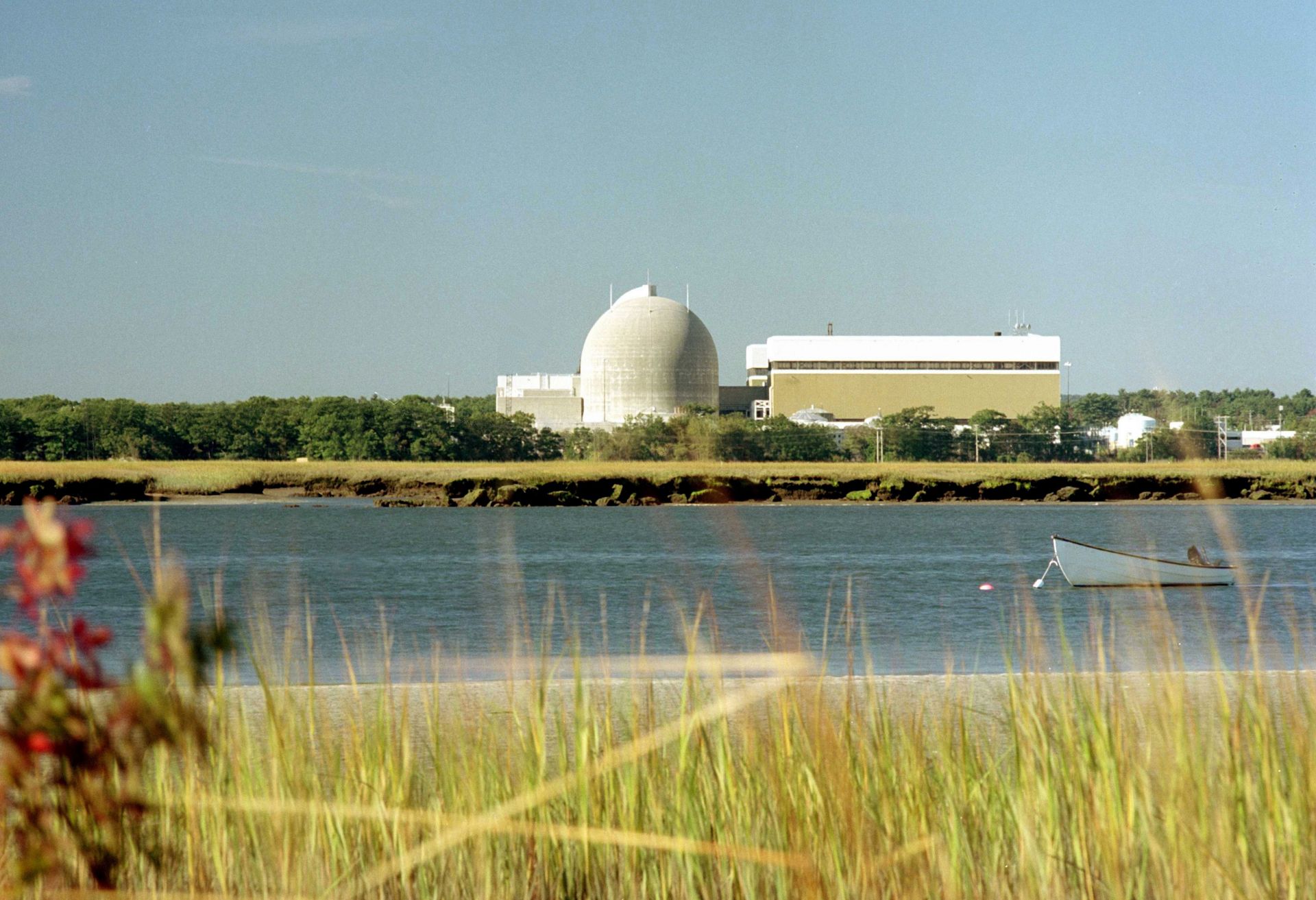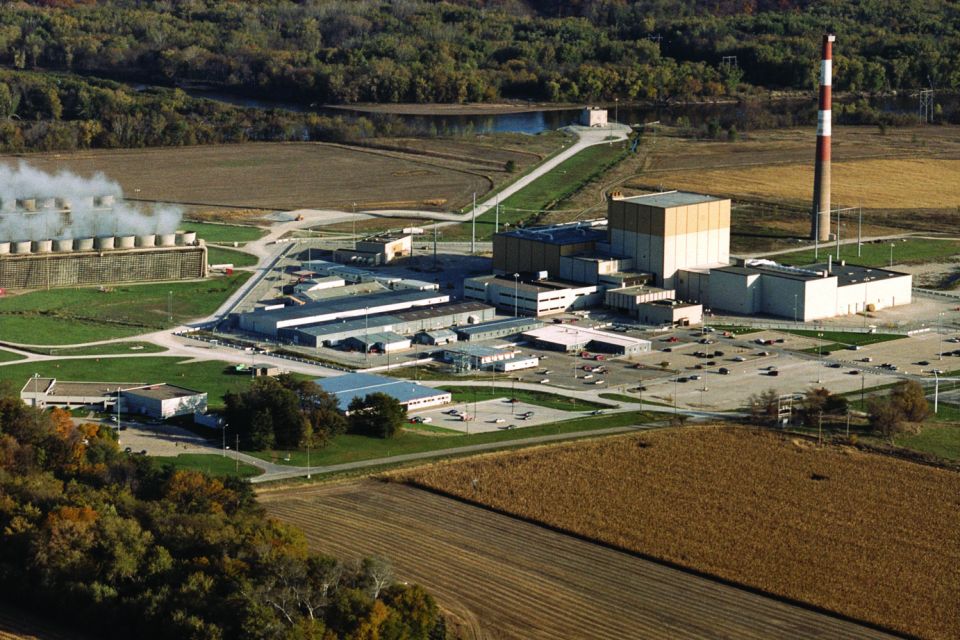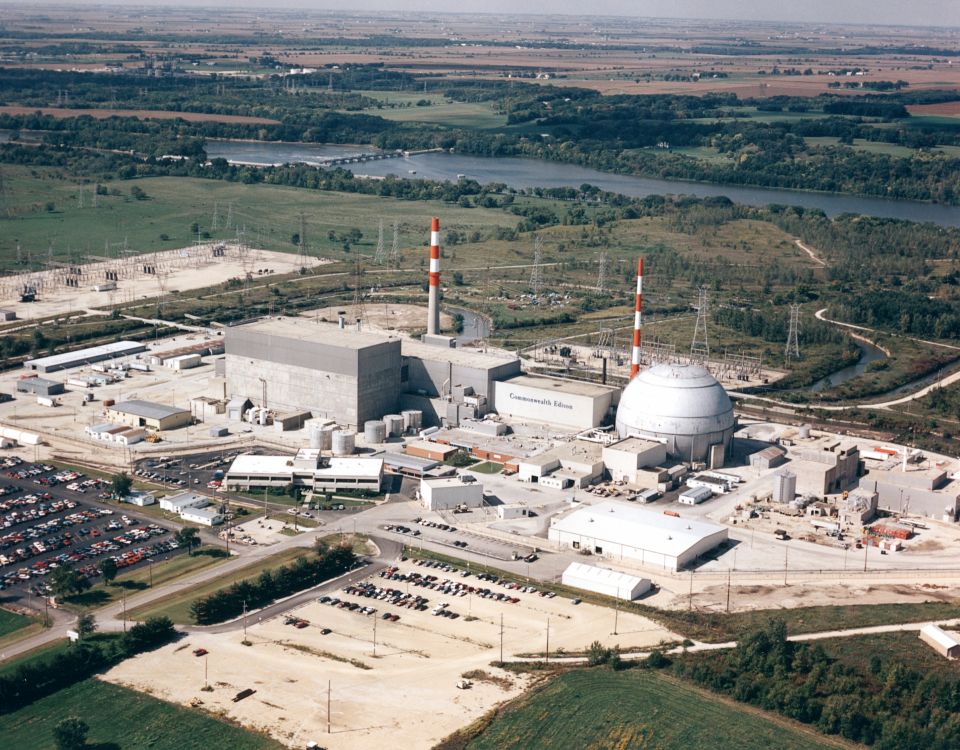Seabrook nuclear power plant, located in southern New Hampshire. (Photo: NextEra Energy)
According to a new study conducted by the economics consulting firm Analysis Group, “Massachusetts utilities could save their customers $880 million to more than $2 billion by 2032 by entering into a long-term power purchase contract with the Seabrook Station nuclear plant.” The study, Economic and Environmental Benefits to Massachusetts from the Operation of the Seabrook Nuclear Plant, also found that operation of the plant through 2032 is expected to contribute as much as $2.9 billion to the state’s economy and reduce regional greenhouse gas emissions by 5 million tons per year.
The study was funded by NextEra Energy Resources, the principal owner and operator of the Seabrook facility, in Seabrook, N.H. (Minority owners include Massachusetts Municipal Wholesale Electric Company, Taunton Municipal Lighting Plant, and Hudson Light & Power Department.) Analysis Group’s researchers pointedly stated that study’s conclusions reflected their independent judgement alone.
Brief history: The operating license for Seabrook pressurized water reactor was first issued in 1986. Commercial operation began in 1990. In 2019, the Nuclear Regulatory Commission approved NextEra Energy’s request to extend the operating license of the plant by 20 years, to 2050.
Two models: The researchers, led by Analysis Group vice president Joseph Cavicchi and associate Jonathan Franklin, based their findings on “commercially available power market and regional economic impact modeling software”, which they used to produce two different estimates of electricity generation in Massachusetts from 2023 to 2032. One estimate included Seabrook’s 1,250 MW capacity, and the other estimate excluded it. The researchers ran models for the two estimates to analyze economic and consumer impacts, greenhouse gas emissions, and fossil fuel consumption under different natural gas price forecasts.
Main conclusions: The key takeaways of the study findings follow:
- Seabrook provides almost 8 percent of New England’s power supply, lowers Massachusetts consumers’ electricity and natural gas costs, reduces greenhouse gas (GHG) emissions and regional natural gas demand, and provides high-reliability, year-round power supply and capacity.
- A long-term power purchase agreement with Seabrook could save Massachusetts consumers $880 million to $2.61 billion over a ten-year period, ensure the state meets its GHG reduction objectives, and insure consumers against electricity and natural gas market price volatility.
- Seabrook’s operation significantly contributes to Massachusetts’ GHG emission reduction objectives, avoiding an estimated 49 million tons of regional carbon dioxide emissions over a ten-year period (2023–2032). The value of the avoided emissions is estimated to be $611 million (equivalent to adding 2,500 MW of new offshore wind resources or the removal of nearly 1 million automobiles from roadways).
- Seabrook’s operation replaces an equivalent amount of gas-fired capacity, roughly three 400 MW combined-cycle facilities. In winter months, when power prices are highest, these resources’ gas use corresponds to over 200,000 cubic feet per day—or roughly 20 percent of the daily natural gas supply consumed by power generators during winter cold snaps.
- Seabrook’s operation reduces Massachusetts’ electricity consumers’ energy costs. Based on a wide range of New England natural gas price forecasts, Seabrook’s operation could reduce the state’s electricity costs by an estimated $1.60 billion to $2.31 billion over the next ten years (2023–2032).
- Finally, Massachusetts consumers’ savings from lower electricity costs translate to added value to the Massachusetts economy through increased economic activity and more jobs. When these often overlooked benefits are included, Seabrook’s operation provides an estimated total economic impact on Massachusetts of $2 billion to $2.91 billion and creates hundreds of jobs.
Summary statement: Cavicchi said of the study findings, “Beyond the estimated savings to consumers, our study suggests that continued plant operation substantially reduces carbon dioxide emissions, helps keeps down Regional Greenhouse Gas Initiative emission allowance prices, and reduces Massachusetts’ and New England’s reliance on natural gas, especially during cold winter months. Moreover, Seabrook's operation is critical for the state to meet its clean energy standards in the coming years, and it plays a significant role in maintaining regional power system reliability.”










